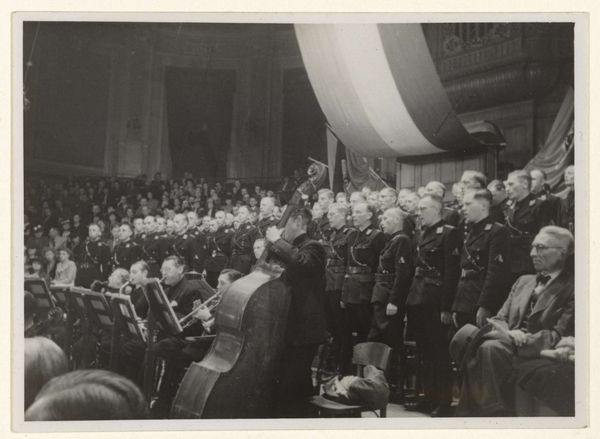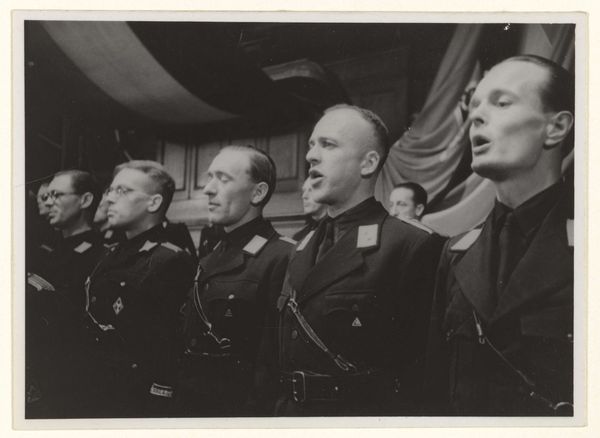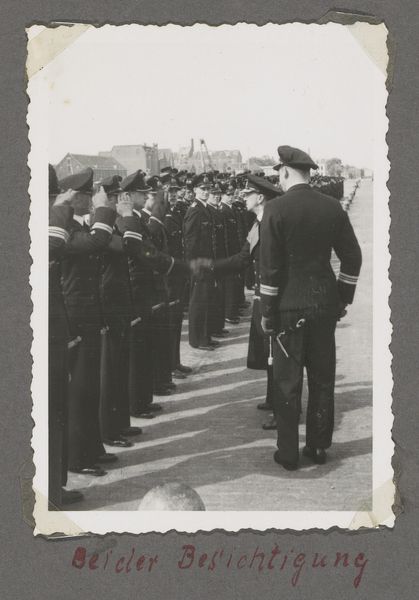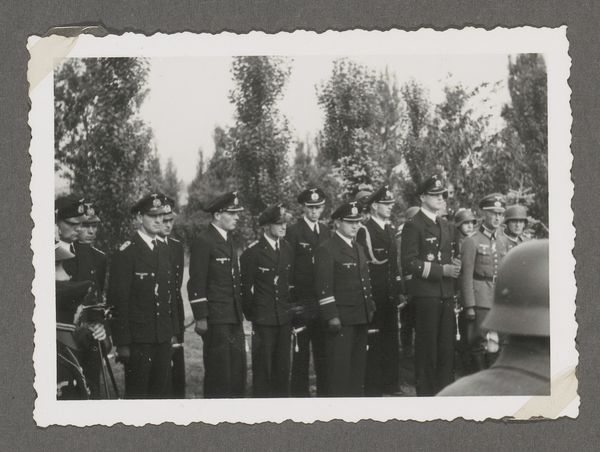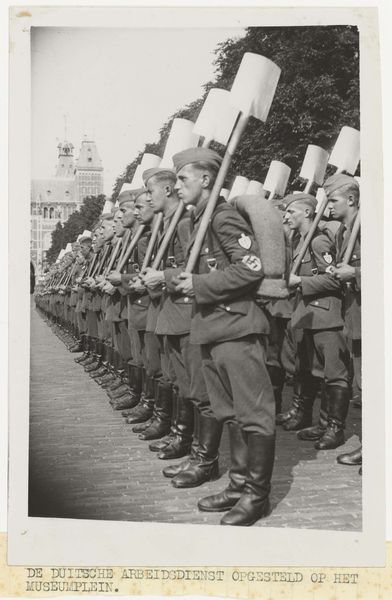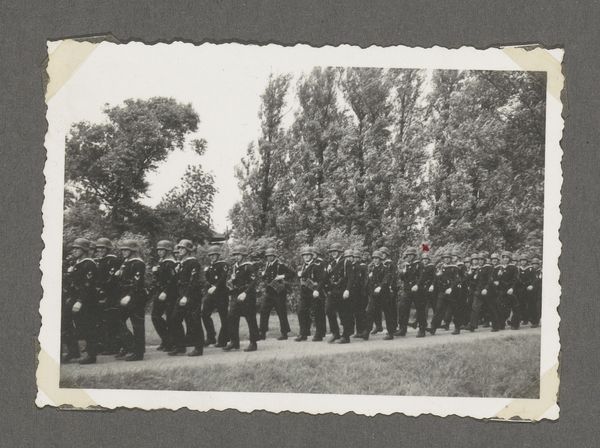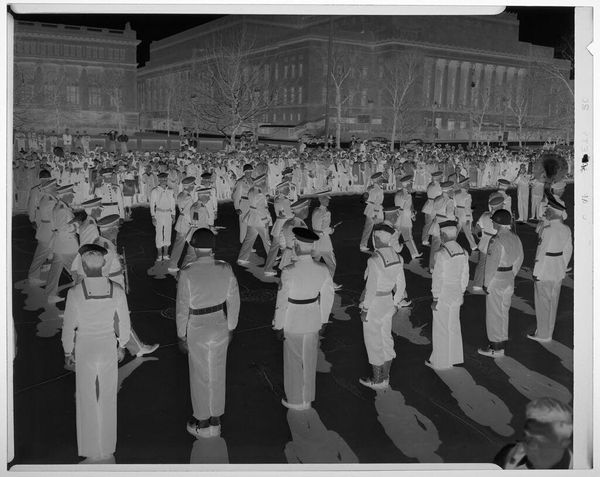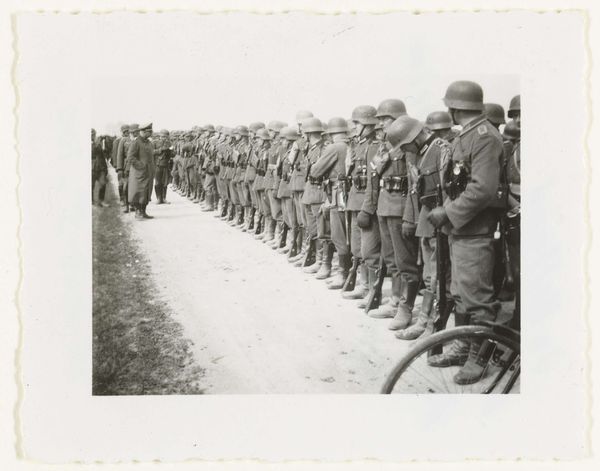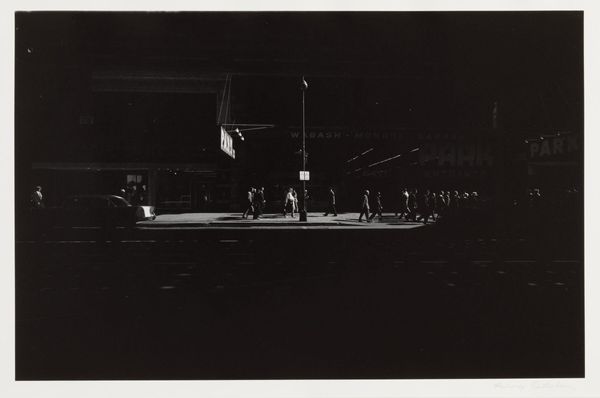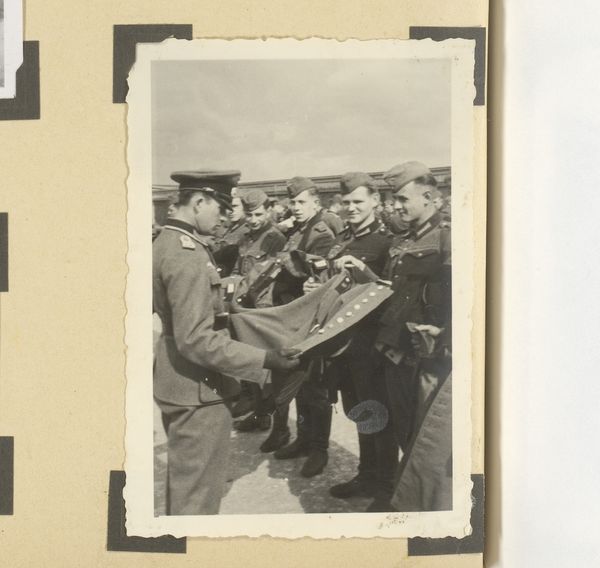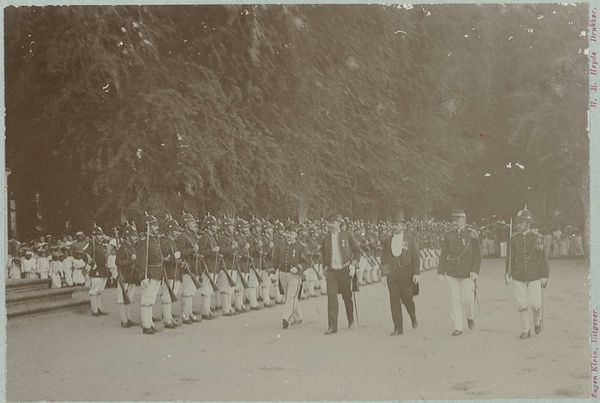
Dimensions: height 6 cm, width 8.5 cm
Copyright: Rijks Museum: Open Domain
Curator: Looking at this image, I'm immediately struck by the sheer uniformity. It's almost suffocating. A sea of faces, all wearing the same expression, the same uniform. Editor: Absolutely. This gelatin silver print, likely dating from 1943-1945, is entitled "Zanguitvoering van de WA." The WA refers to the Weerafdeling, the paramilitary branch of the NSB, the Dutch National Socialist Movement. So, what we are seeing is a choral performance, perhaps a rally, by members of this organization during the Second World War. Curator: The dark uniforms, the stark lighting, it feels incredibly…ominous. Even the musicians in the foreground, they look like they're playing a tune that's anything but joyful. Like a discordant requiem of sorts. Editor: Precisely. The context here is vital. The NSB was a collaborationist party, actively supporting the Nazi occupation of the Netherlands. So, this image isn't just a group of people singing; it represents complicity, the erasure of individual identity in favor of a collective, and deeply problematic, cause. Curator: The Dutch flag backdrop… that’s unsettling. It’s been entirely repurposed by these guys. Editor: A calculated visual tactic meant to normalize their presence by creating the impression that their values align with the Netherlands. German Expressionism also heavily inspired them during this period. What is further revealed here is the manipulation of national symbols and ideals for propaganda purposes. It speaks volumes about the complexities of identity and belonging during times of conflict. Curator: Knowing all that casts a much darker shadow. Even the technical aspects – the graininess of the print, the harsh contrasts – contributes to this feeling of unease and alienation. Editor: I find that the very existence of this photograph asks difficult but essential questions about memory, responsibility, and how we confront uncomfortable aspects of our history. How are we supposed to think of events and actors within them? Curator: For me, the image serves as a warning. It's a chilling reminder of how easily ideology can distort and corrupt, transforming ordinary people into instruments of oppression. The past is ever-present here, and we must learn from it.
Comments
No comments
Be the first to comment and join the conversation on the ultimate creative platform.
